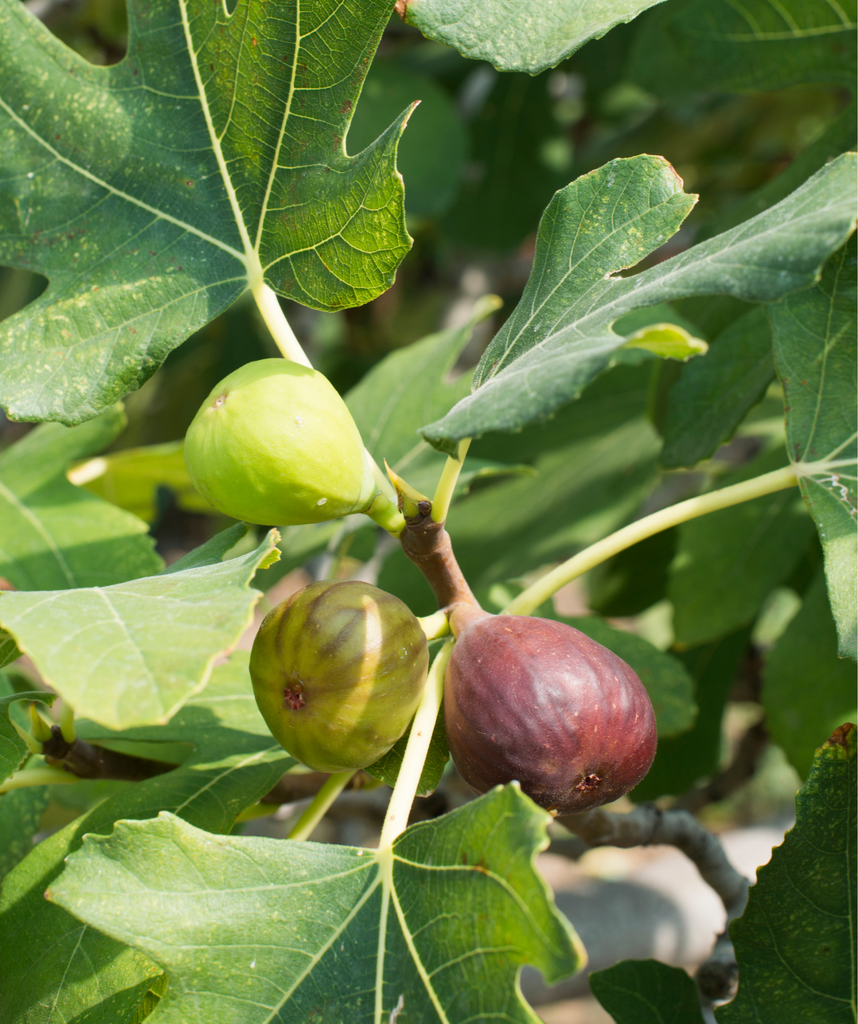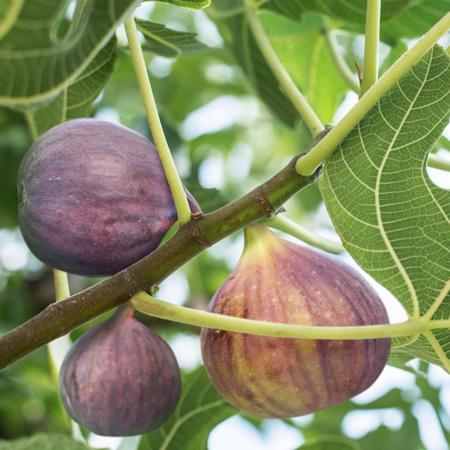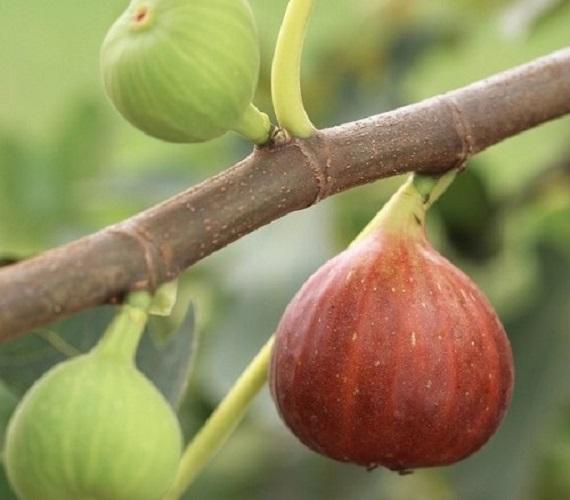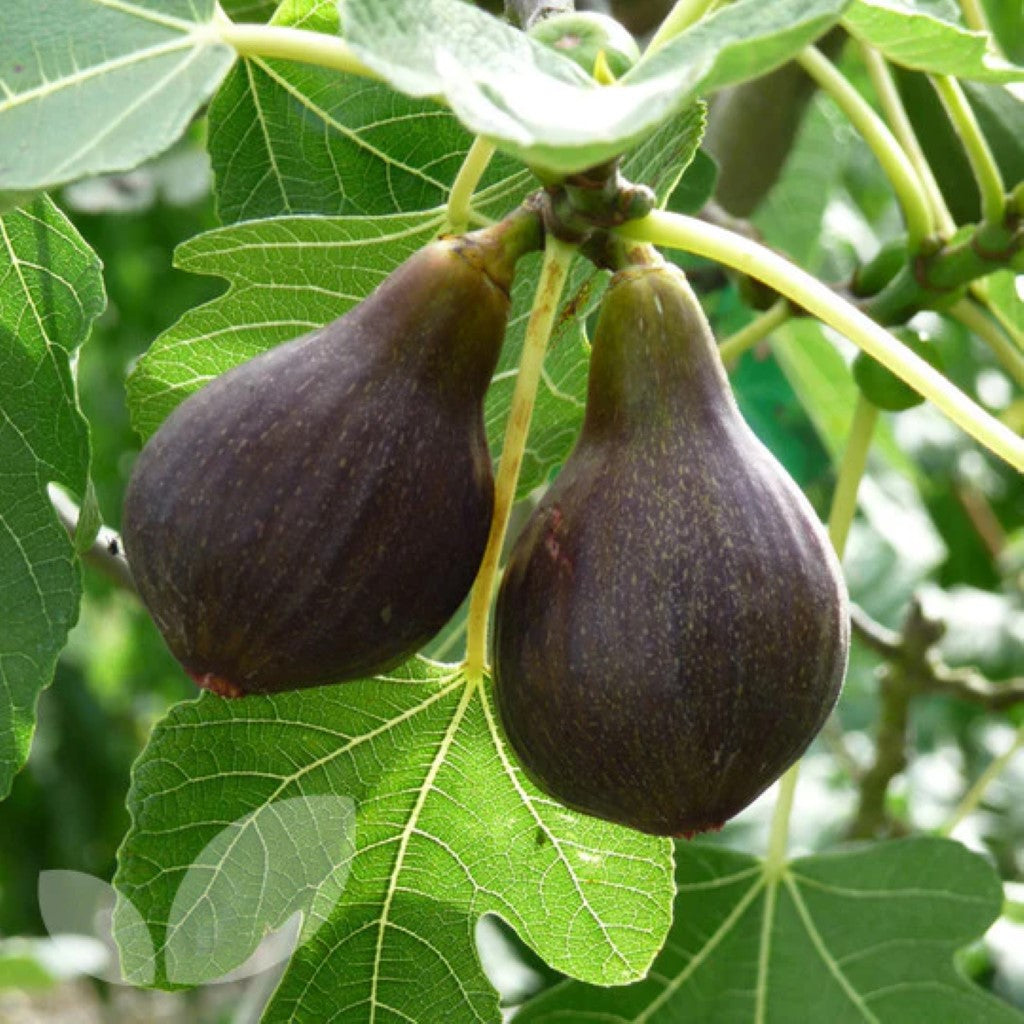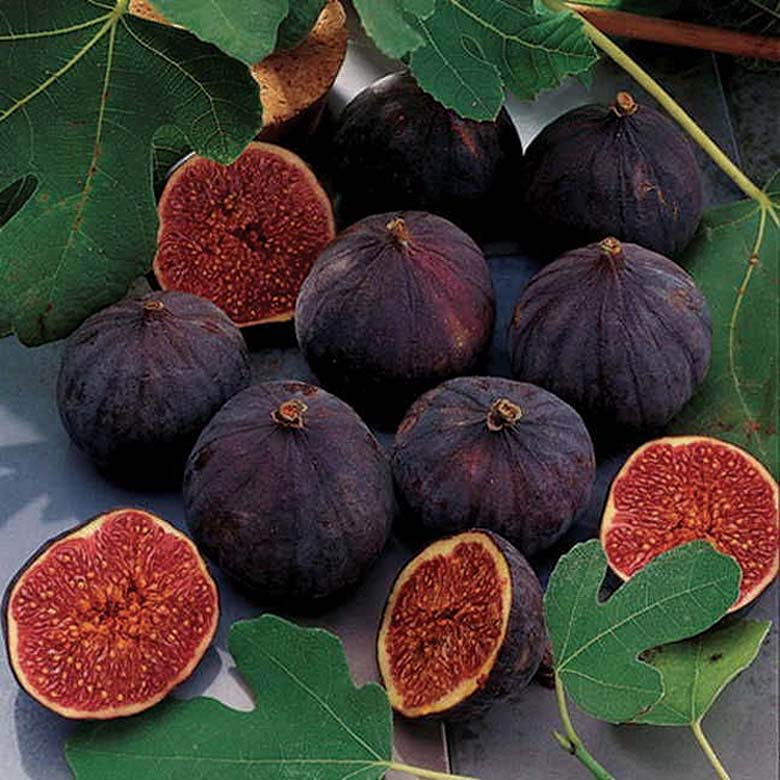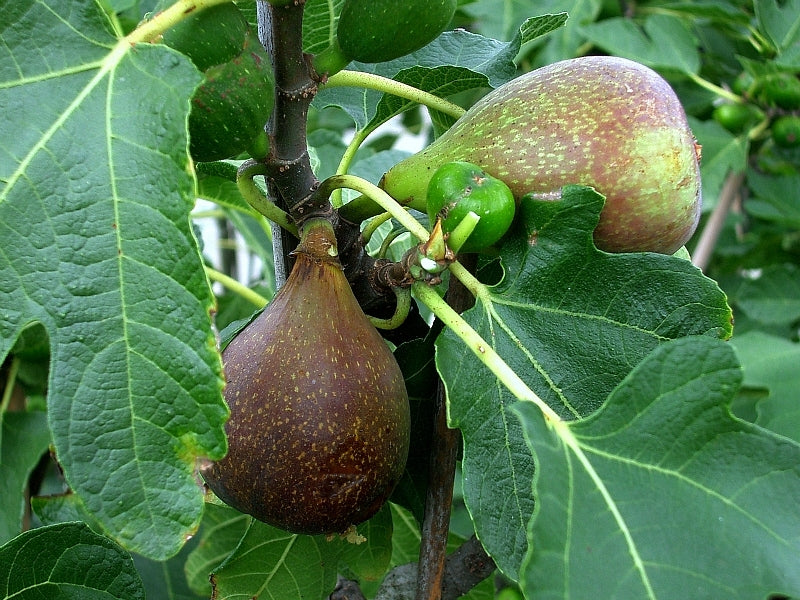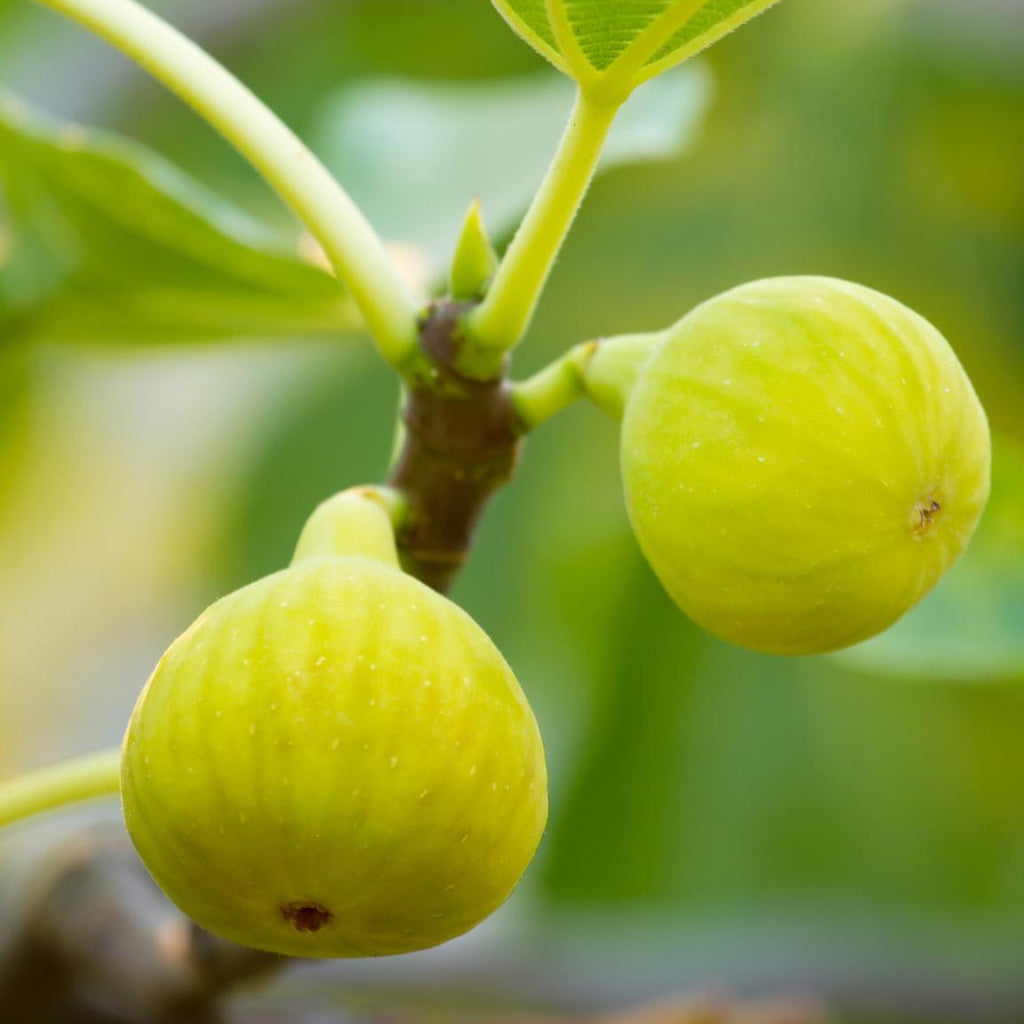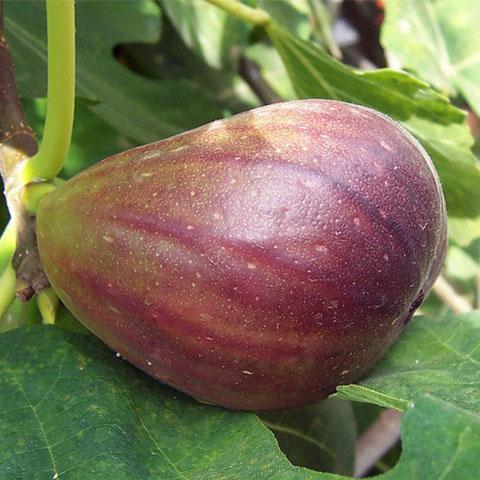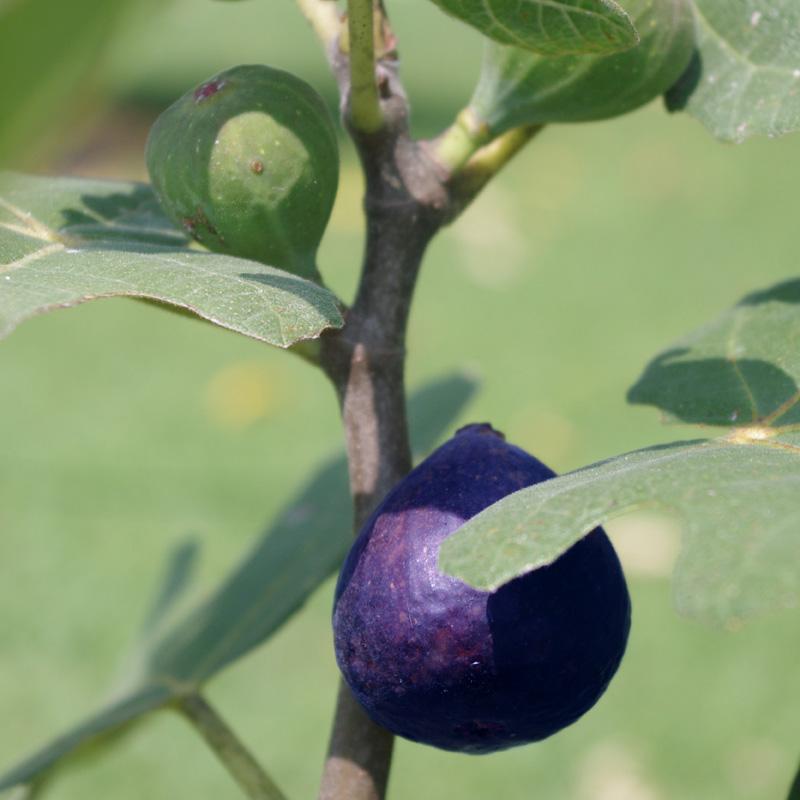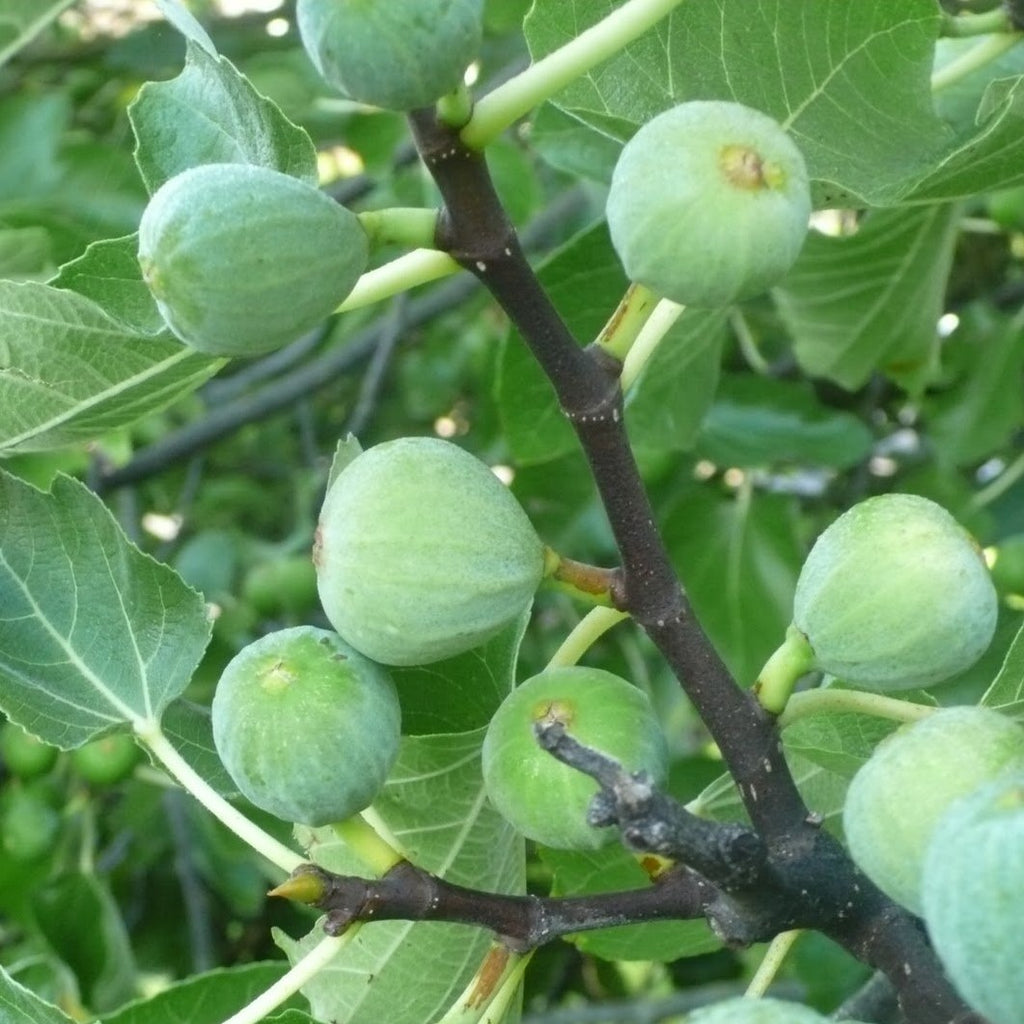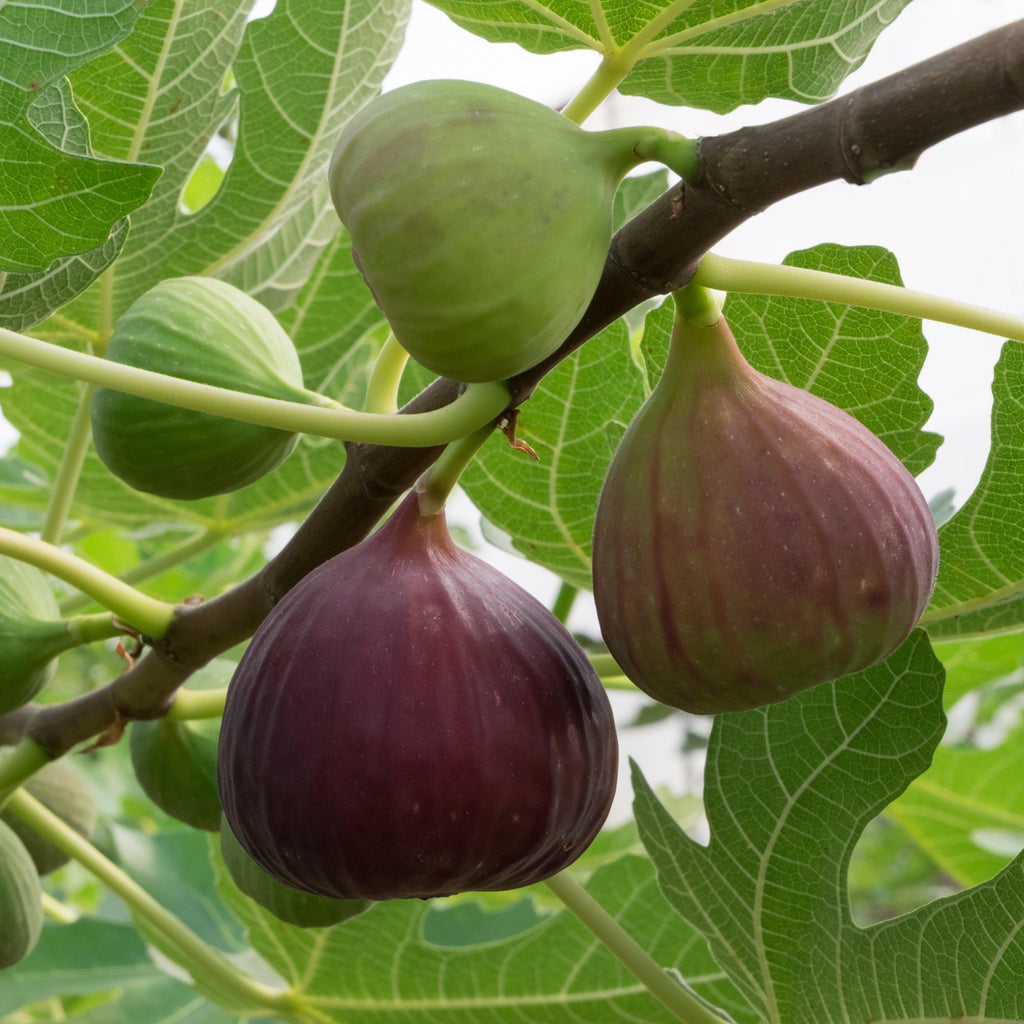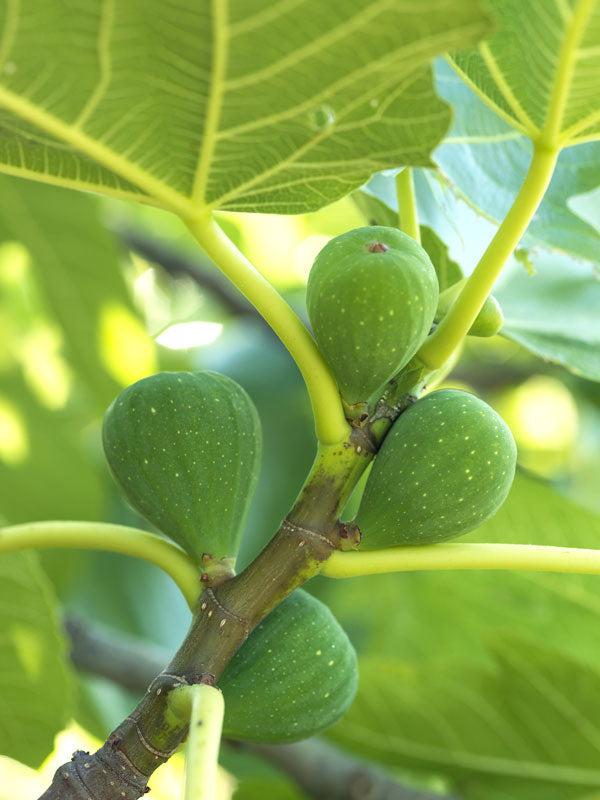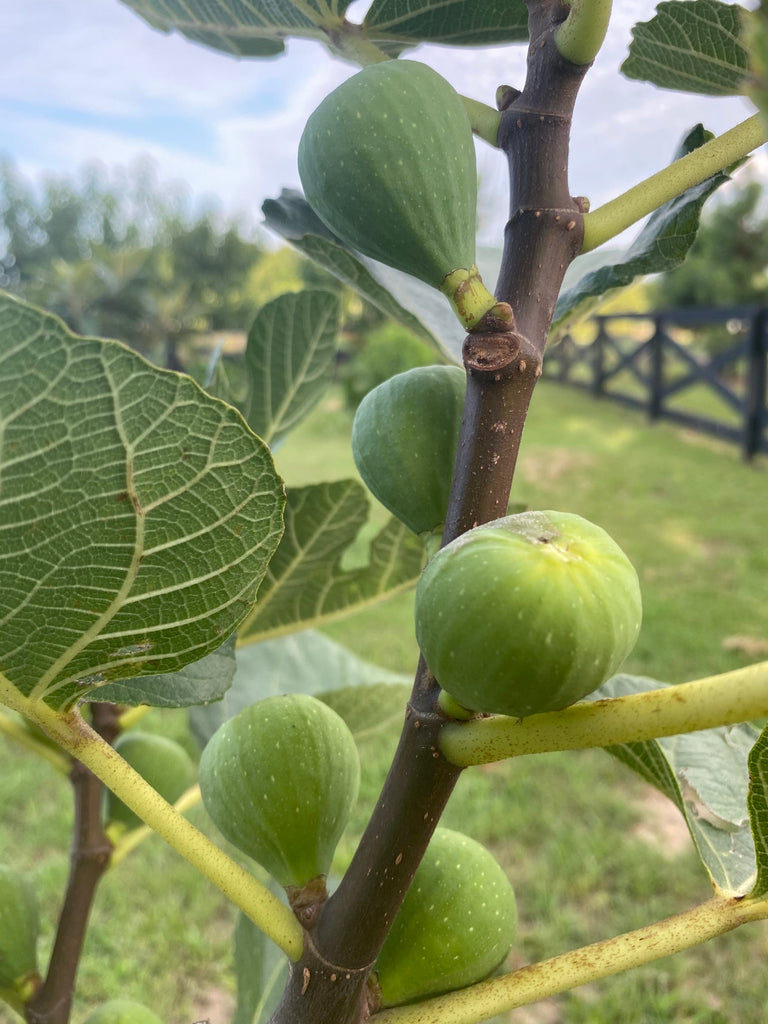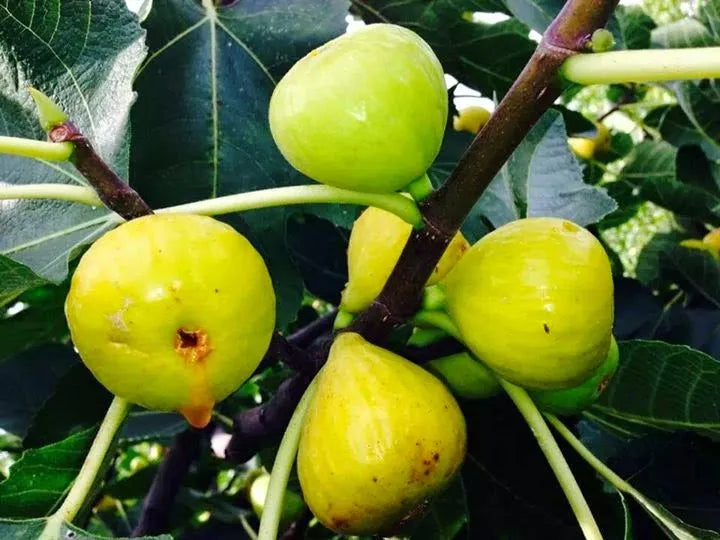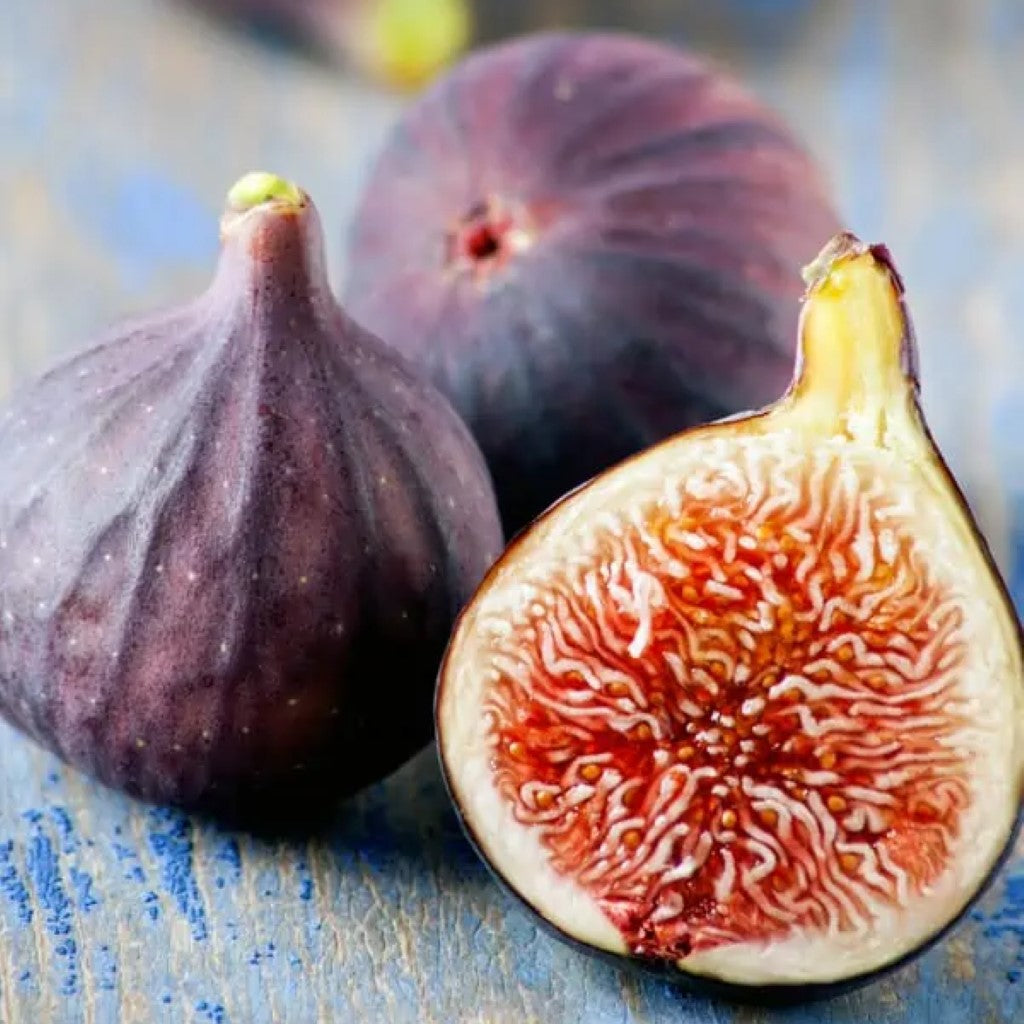Are you wondering, "Where can I find fig trees for sale near me?" 🤔 Look no further! Instead, have a look at our wide range & iconic selection of fig trees at Pixies Gardens!
Upgrade your garden or orchard with our collection of fig trees for sale, offering not only delectable fruit but also exceptional beauty to completely change your outdoors.
At Pixies Gardens, we're dedicated to providing you with top-quality fig tree plants for sale, sourced in a way to ensure superior health 💪 and vitality 🧬. With our convenient online store, you can explore our diverse selection of fig trees and make your purchase from the comfort of your home!
Trust our team of experts to guide you in selecting the perfect fig tree for your garden. Explore our fig trees for sale today and onboard the train of flavorful fruits with Pixies Gardens!
📖 History & Origin
Fig trees (Ficus carica) boast a rich history dating back thousands of years, with origins traced to ancient civilizations in the Middle East and Mediterranean regions. Archaeological evidence suggests that fig cultivation began around 9400–9200 BCE in the Jordan Valley, making it one of the earliest domesticated crops.
Fig trees held immense cultural and religious significance in ancient civilizations, featuring prominently in Greek and Roman mythology as well as biblical stories. The fig tree's resilience and adaptability allowed it to spread across continents, becoming a staple crop in regions with favorable climates.
🌳 Optimal Conditions for Cultivating Fig Trees
Fig trees survive in full sunlight and well-drained soil, requiring regular watering to keep the soil consistently moist but not waterlogged.
|
Parameter |
Details |
|
Family |
Moraceae |
|
Growth Habit |
Deciduous tree or large shrub |
|
Height |
Varies by cultivar, typically 3 to 9 meters (10 to 30 feet) |
|
Lifespan |
50 to 100 years in optimal conditions |
|
Hardiness Zones |
USDA Zones 7 to 11 |
|
Temperature (F) |
Preferably between 75°F to 85°F (24°C to 29°C) during the growing season; can tolerate temperatures down to 10°F (-12°C) when dormant |
|
Soil Requirements |
Well-drained, fertile soil |
|
pH Range |
6.0 to 6.5 (slightly acidic) |
|
Sun Exposure |
Full sun to partial shade |
|
Watering Needs |
Moderate, drought tolerant once established |
|
Pruning Requirements |
Minimal pruning for shaping and maintenance |
|
Flowering Season |
Spring to early summer |
|
Flower Color |
Not showy |
|
Fruit Ripening Season |
Summer to early fall |
|
Fruit Color |
Varies by cultivar, including green, purple, or brown |
|
Fruit Flavor |
Sweet, honey-like with a unique texture |
|
Propagation Methods |
Stem cuttings, air layering, or grafting |
|
Pests and Diseases |
Susceptible to fig mosaic virus, nematodes, and fungal diseases |
|
Harvesting Time |
When fruits are plump, soft, and have a slight bend at the neck |
|
Fertilizer Information |
Balanced fertilizer, such as 10-10-10, applied in early spring and again in early summer. Avoid excessive nitrogen fertilization, which can promote vegetative growth at the expense of fruit production |
Usually, fig trees prefer moderate temperatures and benefit from organic and balanced fertilizer applications. The harvest season for figs typically occurs from late summer to early fall, although specific timing can vary based on the fig variety and growing conditions.
💮 Additional Characteristics and Information
- Pollination: Many fig cultivars are self-pollinating, meaning they do not require pollination by another tree to set fruit. However, some cultivars benefit from cross-pollination for improved yields.
- Fruit Varieties: There are hundreds of fig cultivars, each with unique fruit characteristics, including size, color, flavor, and texture. Common cultivars include 'Brown Turkey', 'Celeste', and 'Black Mission'.
- Uses: Figs can be eaten fresh, dried, or used in cooking, baking, jams, and preserves. Dried figs are a popular snack and ingredient in various cuisines.
- Health Benefits: Figs are rich in fiber, vitamins (such as vitamin A, vitamin K, and several B vitamins), minerals (including potassium, calcium, and magnesium), and antioxidants. They may promote digestive health, heart health, and overall well-being.
- Dried Figs: Figs can be dried naturally in the sun or commercially dried. Dried figs have a concentrated sweetness and are often used in baking or eaten as a snack.
- Fruit Set: Figs have a unique fruiting habit where the flowers are contained within the fruit itself. This means that what appears to be the fruit is actually a specialized structure called a syconium, within which the flowers develop and the seeds are located.
- Commercial Cultivation: Figs are commercially cultivated in various regions with warm climates, including Mediterranean countries, California, and parts of Asia and South America.
☀️ How to Grow Fig Trees in Your Garden/Orchard?
Check out our tips on the correct way to grow fig trees in your backyard. With this information and guidelines, you will be able to cultivate and nurture fig trees with ease!
- Varietal Selection: Choose fig tree varieties suited to your climate zone, considering factors like winter hardiness and fruiting season.
- Site Selection: Opt for a sunny, sheltered location with well-draining soil to promote optimal growth and fruit production.
- Soil Preparation: Conduct a soil test to assess pH levels and fertility, amending organic matter as necessary to improve soil structure and nutrient availability.
- Planting Technique: Dig a hole slightly larger than the root ball and plant the fig tree at the same depth as it was in the nursery container, ensuring the graft union is above the soil line.
- Watering Schedule: Provide consistent moisture, especially during the first growing season, to establish strong root systems. Once established, fig trees are relatively drought-tolerant but benefit from occasional deep watering during dry spells.
- Fertilization Schedule: Apply a balanced fertilizer in early spring and again in early summer to support healthy growth and fruit development, following package instructions for dosage.
- Pruning Practices: Prune fig trees in late winter to remove dead or diseased wood, improve airflow, and shape the canopy. Fig trees generally require minimal pruning, focusing on maintenance rather than aggressive shaping.
- Pest and Disease Management: Monitor for common fig pests such as fig beetles and fig mites and treat infestations with insecticidal soap or neem oil. Additionally, practice good sanitation to prevent fungal diseases like fig rust and fig leaf spot.
- Harvesting Guidelines: Harvest figs when they are fully ripe, which is indicated by their softness, color change, and slightly drooping neck. Figs do not ripen well off the tree, so pick them when they are fully mature for the best flavor and texture.
✨ Our Best-Selling Fig Trees (Species)
Explore Pixies Gardens' impressive collection of best-selling fig trees for sale near you. Indulge in the rich flavor and historical significance of the Black Mission Fig Tree, renowned for its sweet, dark fruit and adaptability to various climates. For a classic favorite, consider the Brown Turkey Fig Tree, prized for its prolific fruit production and reliability in home gardens.
Looking for a compact option? We’ve got that too! Our Little Miss Figgy' Dwarf Fig boasts all the deliciousness of traditional figs in a petite package, perfect for small spaces or container gardening. With our fig tree plants for sale, you can enjoy fresh, homegrown figs straight from your garden or orchard. Don't miss out on the opportunity to add these exceptional fig trees to your garden. Shop at Pixies Gardens today!
💡 Frequently Asked Questions (FAQs)
(Question 1): What is the best time of year to plant a fig tree?
Answer: The best time to plant a fig tree is typically in the early spring or late fall, when the weather is mild, and the tree can establish its root system before the onset of extreme temperatures. At Pixies Gardens, we offer a variety of fig trees for sale, ensuring you can find the perfect time to plant in your area.
(Question 2): How long does it take for a fig tree to bear fruit?
Answer: Fig trees typically begin to bear fruit within one to two years after planting, depending on the variety and growing conditions. With proper care and maintenance, you can expect your fig tree from Pixies Gardens to produce delicious fruit in no time.
(Question 3): When can you buy fig trees?
Answer: You can buy fig trees from Pixies Gardens year-round, as we offer fig trees for sale near you both online and in-store. Whether you're starting a new orchard or adding to your existing garden, our selection of fig tree plants for sale ensures you'll find the perfect addition to your landscape.
(Question 4): How fast growing is a fig tree?
Answer: Fig trees are known for their fast growth rate, often reaching maturity and producing fruit within a few years of planting. With proper care and optimal growing conditions, your fig tree from Pixies Gardens will quickly establish itself and provide you with an abundant harvest for years to come. Explore our collection of figs trees for sale and experience the joy of homegrown fruit firsthand!


